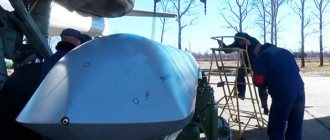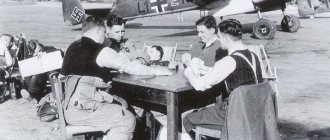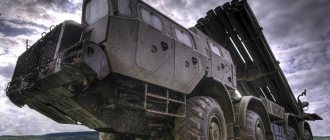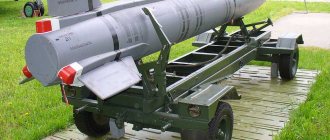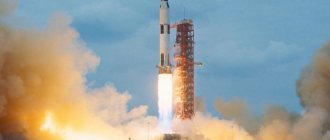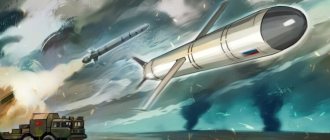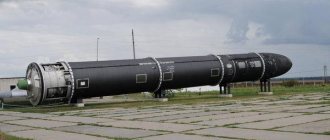From UR to Proton
Getting stuck in the "Hangar": problems in the production of the latest missiles
What's happening to the most promising Russian carrier?
In fact, the Proton, now perceived as an independent development, was part of a large project of the Experimental Design Bureau No. 52 (OKB-52) under the leadership of Vladimir Chelomey. In the early sixties of the last century, at the very dawn of world cosmonautics, the Soviet Union needed rockets capable of launching a large load into orbit. The military simultaneously demanded a ballistic missile capable of delivering a warhead with a yield of more than a hundred megatons. Several design bureaus, including the design bureaus of Mikhail Yangel and Sergei Korolev, worked on projects for such rockets, capable of satisfying both the military and civilian space exploration.
To solve the problem, OKB-52 proposed a project consisting of four missiles of various payloads: UR-100 and UR-200 (UR is a universal rocket) for use as ballistic missiles, UR-500 for launching large-mass spacecraft into orbit and UR -700 as a possible carrier option for the Soviet lunar mission. The missiles were largely unified among themselves; in the draft version, the UR-500 generally consisted of four UR-200 missiles connected to each other and a third stage, again created from the UR-200 missile. Such interchangeability and unification was supposed to facilitate production and speed up the technological process: creating identical steps is always easier.
Proton
Intercontinental ballistic missile UR-100
Photo: RIA Novosti/Sergey Kazak
Chasing two birds with one stone: missile problems of the transition period
Competition between Proton and Angara threatens Russia with the loss of commercial astronautics
Sergei Korolev's design bureau turned out to be faster, offering its development of the R-9 as a ballistic missile and the N-1 as a promising lunar launch vehicle. Work on the N-1 began almost immediately - the launch pad and assembly shops were built. The “moon race” between the USSR and the USA required the fastest possible decisions. The authority of chief designer Sergei Korolev was indisputable, so Chelomeev’s UR-700 had no chance of moving the N-1. But soon Korolev died, and, as we know, the N-1 ultimately never flew - all four launches ended in accident. The design of the Soviet super-heavy rocket N-1 turned out to be too complex for that time, and the savings on creating a test bench did not allow technical problems to be identified and solved in a timely manner. History does not tolerate the subjunctive mood, but if the UR-700 had been chosen as the main lunar rocket, the history of Soviet cosmonautics could have gone differently.
As a result, Chelomey managed to defend only the UR-500 project, which had changed radically by that time. It was decided to place the steps sequentially, one above the other. Modified UR-200s were used as the second stage. The fuel pair chosen for the UR-500 was a combination of unsymmetrical dimethylhydrazine and nitrogen tetroxide - both elements were extremely toxic, but had the necessary characteristics and high energy efficiency for those times. They didn’t think about the environment at that moment; it was much more important to create the rocket on time.
Proton
Launch vehicle UR-500 "Proton" with the spacecraft "Phobos-2" in the installation and testing building of the Baikonur cosmodrome. July 7, 1988
Photo: TASS/Albert Pushkarev
Energomash stopped production of engines for heavy Proton rockets
The design and creation of the UR-500 was carried out in a time frame that is practically unattainable by today's standards. The rocket was fully developed in less than three years by several research institutes. The Khimki Design Bureau of Power Engineering under the leadership of Glushko provided the RD-253 first stage engines, the Voronezh Design Bureau of Chemical Automatics developed the second and third stage engines. In total, more than ten leading organizations scattered throughout the Union worked on the creation of the rocket, and the total number of related companies amounted to hundreds. In 1964, the creation of ground infrastructure at Baikonur began, and on July 16, 1965, the first launch of the UR-500 with the Proton-1 satellite took place. The rocket did not yet have an established name, and in television and radio broadcasts it was called by the name of the payload being launched. This is how the name “Proton” was assigned to the UR-500. It was then that the long-term history of the most popular Soviet heavy rocket, Proton, began, although initially the creators thought about calling it Atlas or Hercules.
History of creation
The rocket received its name at the end of 2022, and before that it was called “RN STK”, namely a super-heavy class launch vehicle or “Super-heavy launch vehicle”.
Roscosmos enterprises participating in the development:
- The lead developer of the super-heavy launch vehicle and the lead developer of the launch vehicle missile complex is RSC Energia.
- Co-executor of work on the development of a super-heavy launch vehicle, as well as its rocket complex, is RSC Progress together with RSC Energia.
- The developer of the third stage is the Khrunichev Center.
- The developer of the 1st stage kerosene engines RD-171MV is NPO Energomash.
- The developer of stage 3 hydrogen engines RD-0150 and stage 2 kerosene engines RD-0124MS is KBHA.
- The developer of the 2nd stage RD-0124MS engines is the Voronezh Mechanical Plant.
- The developer of the telemetry system, which provides monitoring of launch performance, is the Russian Space Systems Holding.
- Technological support for product development: creation of a project for an assembly plant for the central unit of the carrier, development of directive technology for the production of the central unit, participation in the preparation of proposals for the main technologies used and in the analysis of future production cooperation - Federal State Unitary Enterprise NPO Tekhnomash.
- Providing control over the design of the launch vehicle - TsNIIMash.
- The developer of the ground infrastructure is TsENKI together with RSC Energia.
- The leading economic research institute of the rocket and space industry of the Russian Federation is the Federal State Unitary Enterprise Organization "Agat".
- Creation of specialized software for simulating fire tests of engines - SRC RKP (Scientific Testing Center of the Rocket and Space Industry).
- Creation of control systems – NPO Automation named after. Academician N.A. Semikhatova.
- Working out the problems of aerodynamics, heat, as well as flight dynamics of the TsAGI launch vehicle.
Departments not related to the structure of Roskomos:
- Development of a supercomputer (hybrid cluster computing system GKVS-25, with a total performance of 85 teraflops) for virtual simulation of engine fire tests - Russian Federal Nuclear Center.
- Quality control, progress and technical acceptance of the results of the R&D work “Development of a preliminary design for a super-heavy class space rocket launcher - Military Representation of the Ministry of Defense of the Russian Federation.
Space heavy truck
The price of freedom: prospects and opportunities of the Vostochny Cosmodrome
Why Russia's newest cosmodrome is still hardly used
Almost immediately, the development of a new modification of the Proton rocket, Proton-K, began. Initially it was assumed that it would be used to launch spacecraft on a departure trajectory to the Moon. And already in 1967, launches of this rocket began. Alas, the first launches showed serious problems in the lunar program of the Soviet cosmonautics. Of the 11 launches, only one, Zond-7, was considered completely successful, while failures were divided in half between the launch vehicle and the lunar spacecraft.
The main problems of the rocket were corrected, and Proton-K immediately became the main Soviet rocket for launching geostationary satellites and almost all interplanetary missions. With the help of this rocket, lunar rovers were delivered to the Moon, and automatic stations were launched to Mars and Venus. The successful Soviet Vega mission, designed to study Venus and Halley's Comet, was also launched using Proton.
Proton
In the assembly workshop of the Proton launch vehicle. Machine-building plant named after. M.V. Khrunicheva. 1989
Photo: RIA Novosti/Alexander Mokletsov
Despite the fact that Proton was originally a cargo rocket, it also greatly helped manned astronautics. With its help, the first manned long-term orbital stations of the Salyut series were delivered into orbit. In 1986, Proton launched the first and subsequent modules of the Mir orbital station. In 1998–2000, Proton was used to launch the first and third modules of the International Space Station, Zarya and Zvezda, into orbit. Without Proton, manned astronautics in its current form simply would not exist.
Imaginary problems: what’s wrong with the Angara engine
And why is it too early to discuss the problems of the Russian carrier?
It was with the help of Proton that Russia created its own global navigation satellite system GLONASS. By the beginning of the 2000s, the main hopes of Russian commercial astronautics were associated with Proton. It seemed that Proton would reign supreme in the niche of launching communications satellites. The low price, fairly high reliability by that time and the solid weight of the payload to be launched made it an almost non-competitive option.
Yenisei launch vehicle: photos, characteristics, video
"Yenisei" is a Russian-made super-heavy launch vehicle.
The first launch vehicle was developed in the post-Soviet period by Russian industry. The lead development organization is RSC Energia. It was created within the framework of the federal target program called “Creation of a super-heavy class space rocket complex for 2020-2030 (to be prepared in the spring of 2022). 1.5 trillion rubles were allocated for the project. As for the first launch, it is planned for 2027 and will be carried out from the Vostochny Cosmodrome. The main rocket launcher for the second stage of the Russian lunar program.
Environmental problems
But if the Proton is so useful and necessary, why did it begin to be replaced with the Angara? There are two main reasons for this: the safety of Russian cosmonautics and the low environmental friendliness of the rocket. All Proton launch sites are located at the Baikonur Cosmodrome in Kazakhstan, and its dimethylhydrazine fuel has become the main Kazakh bargaining chip in negotiations with Russia about the cosmodrome. Horrible “details” often appear in the press about how toxic fuel is almost poured onto the heads of residents during the next rocket launch.
This doesn't have much to do with reality. Stages that have worked correctly fall into the steppe almost empty, after which they are removed by a special service. Yes, accidents happen, and then the area is actually contaminated, but each such case is dealt with separately, deactivation is carried out, and compensation is paid to Kazakhstan. Nevertheless, the idea of replacing the Proton with the Angara and gaining independence in launching a heavy launch vehicle has been floating around in Russian cosmonautics for more than a quarter of a century. The transition process turned out to be much more difficult and lengthy than initially thought.
Proton
Installation of the Proton-M launch vehicle. The Proton-M launch vehicle fell on July 2, 2013 in the first minute of launch
Photo: RIA Novosti/Roscosmos Press Service
Among other things, the increased accident rate of Proton in 2010–2015 and the subsequent entry of new private competitors into the market seriously undermined Russia’s position in the commercial launch market. For more than ten years, Proton has practically lost the results it has accumulated over the years. Even the new version of the Proton-M launch vehicle, released in the 2000s, did not help. Too many different factors came together in one place, and under their pressure, Proton lost a significant share of the commercial market.
Substitution on the field
Why Roscosmos abandons Proton in favor of Angara
If we take the entire time as a whole, then the statistics of Proton launches cannot be called completely bad. The launch vehicle has more than 90% successful launches. At the same time, in terms of technical parameters, the Proton is more convenient and efficient than the Angara that is replacing it, at least in its current unmodified version. However, the absence of dependence is more important.
Development timeline
| Deadlines | Type of work |
| June 2022 | Start of work on the creation of the RD-171MV |
| June 2022 | Start of research on RD-0150 |
| October 2022 | Preliminary estimate of the cost of work on the STK launch vehicle |
| January 2022 | Decree of the President of the Russian Federation on the creation of the KRC STC |
| January 2019 | Official name for RN STK |
| spring 2022 | Feasibility study of the KRC STC project |
| 2018-2019 | Schematic design |
| 2020-2028 | R&D, design, survey and construction works |
| from 2028 | Flight development tests |
Planned Events
- Spring 2022 – it is necessary to prepare a feasibility study for the project of a super-heavy class launch vehicle.
- 2026 - production and commissioning of infrastructure for a super-heavy launch vehicle and a middle-class rocket intended for launching manned spacecraft from the Vostochny cosmodrome.
Launch pad
The launch pad will be built at the Vostochny cosmodrome, adhering to the principles that were implemented by the Energia launch vehicle at Baikonur. It will be a universal stand-launch complex from which both middle-class Soyuz-5 launch vehicles and rocket blocks combined into a “package” will be launched, which will make it possible to assemble launch vehicles of different payloads, including a super-heavy rocket.
Under the leadership of Roscosmos Executive Director for Reliability and Quality Assurance A. Lopatin, on January 28, 2022, a reconnaissance commission arrived at the Vostochny cosmodrome to locate the ground-based space infrastructure of the super-heavy rocket complex, the transport and power module for promising space programs and assess the possibility of resuming launches. light class missiles "Start-1". Five groups of specialists from representatives of rocket and space companies worked out the proposed locations for the construction of ground infrastructure facilities, and also decided on the most suitable locations, taking into account the locations of existing facilities.
When developing preliminary designs and forming the Federal Target Program for the Creation of a Super-Heavy Class Space Rocket Complex for 2020-2030,” formed by Roscosmos in strict accordance with the Decree of the President of Russia
At the XLIII Korolev Readings on Cosmonautics, which took place on January 29, 2022, Roscosmos announced that the launch complex for the Yenisei was going to be built 22 km from the town of Tsiolkovsky, which is located northwest of the existing launch complex for the Soyuz-2 rockets. .
Feasibility study of the project
During the development of the design of the STC KRC, a calculation of the estimated cost of creating the STC KRC and its products must be created, including an assessment of the labor intensity of manufacturing the complex’s products, technological support for experimental testing and production preparation. At the same time, the justification of the technical and economic indicators for the development of USC and TC is prescribed in 2022 prices and will comply with GOST B 20.39.106-83. In the feasibility study at the ES stage, the following preliminary technical and economic indicators must be identified and justified:
- The cost of the construction process of facilities, control, measurement, registration and other infrastructure that ensures launches from the cosmodrome, including the option of locating the production of such dimensional structural elements of the RB RKN STK and PH STK at the Vostochny cosmodrome.
- The cost of developing USK and TC RKN, TC PH, TC RB RKN STK, TC MB, which are part of the universal technical complex.
- The complexity of maintenance of the ILV at the UKS, ILV and its components at the TK during operation.
- The average annual cost of operating USC and TC, taking into account the climate zone in which the Vostochny cosmodrome is located.
- Costs for installation, commissioning, as well as testing of equipment at TC and USK.
- Cost calculation project for TC and USK.
- Comparative tactical and economic characteristics of the STC KRK in comparison with the created foreign complexes of the same type.

